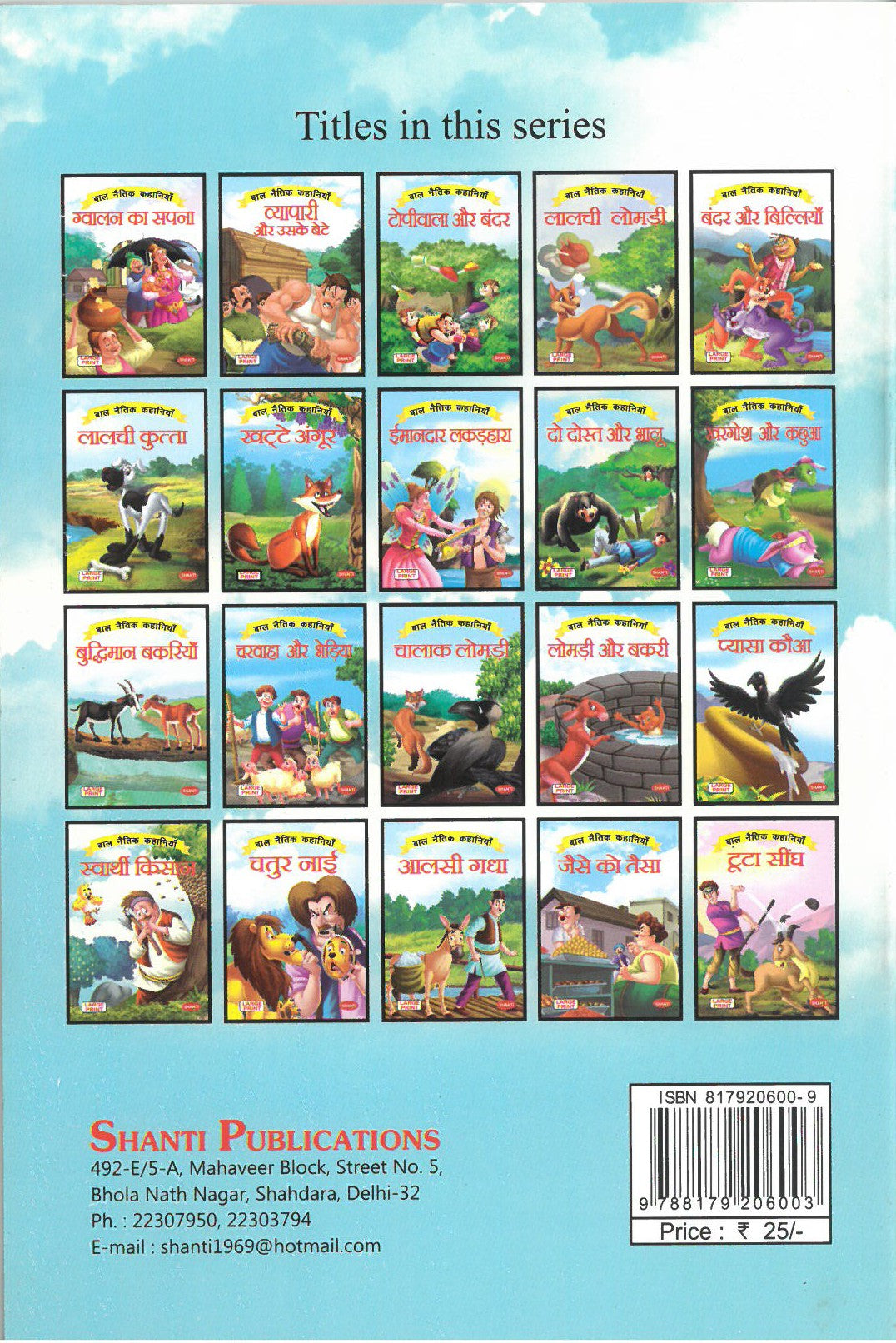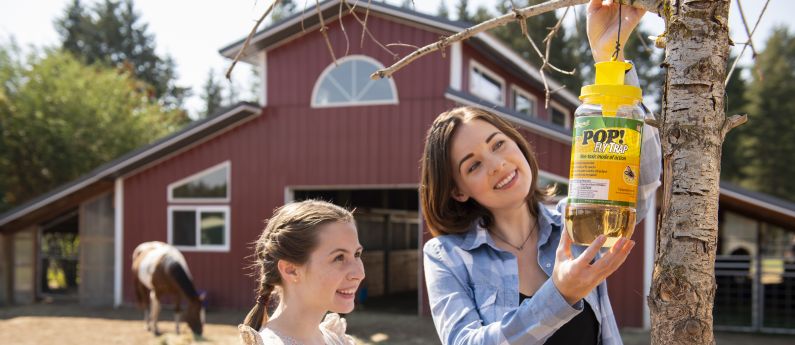Watch the popular children's moral story 'Pandit Ka Navlakha Haar'. This is a short moral story for the kids who would learn new morals in everyday life. For popular children story, kids songs, children songs, children's poems, baby songs, baby rhymes, kids nursery rhymes, nursery poems in Hindi visit Etimes Hindi kids sections. Check out Etimes Kids videos section for more Kids Nursery rhymes, Baby songs, Kids poems, and Moral stories.
Watch popular children's moral story 'high jump challenge'. The story will surely inspire the little ones and will be an excellent source for character building. Popular Children's Story, Children's Song, Children's Song, For Children's Poems, baby Songs, Baby Rhymes, Kids Nursery Rhymes, Nursery Rhymes Hindi meeting etimes hindi Children's section. Check out the ETimes Kids Videos section for more kids nursery rhymes, baby songs, kids poems and moral stories. As parents, it is our responsibility to provide a strong start to our children by offering them meaningful content that not only entertains them but also educates them.
And what more fun way to do it than making them read or listen to short moral stories. We hope you enjoy our podcast collection of Hindi short stories with morals for kids and we will continue to bring more engaging and interesting Hindi stories for kids. Watch the popular children's moral story 'Jadui Do Phool'. The stories have educational value and culminate with a Teaching lessons for the watching audience. For popular children story, kids songs, children songs, children's poems, baby songs, baby rhymes, kids nursery rhymes, nursery poems in Hindi visit ETimes Hindi kids sections.
Check out ETimes Kids videos section for more Kids Nursery rhymes, Baby songs, Kids poems, and Moral stories. Fairy tales have been enacted dramatically; records exist of this in commedia dell'arte, and later in pantomime. The advent of cinema has meant that such stories could be presented in a more plausible manner, with the use of special effects and animation. The Walt Disney Company has had a significant impact on the evolution of the fairy tale film. Some of the earliest short silent films from the Disney studio were based on fairy tales, and some fairy tales were adapted into shorts in the musical comedy series "Silly Symphony", such as Three Little Pigs.
Walt Disney's first feature-length film Snow White and the Seven Dwarfs, released in 1937, was a ground-breaking film for fairy tales and, indeed, fantasy in general. Disney and his creative successors have returned to traditional and literary fairy tales numerous times with films such as Cinderella , Sleeping Beauty , The Little Mermaid and Beauty and the Beast . Disney's influence helped establish the fairy tale genre as a genre for children, and has been accused by some of bowdlerizing the gritty naturalism – and sometimes unhappy endings – of many folk fairy tales. However, others note that the softening of fairy tales occurred long before Disney, some of which was even done by the Grimm brothers themselves. In contemporary literature, many authors have used the form of fairy tales for various reasons, such as examining the human condition from the simple framework a fairytale provides. Some authors seek to recreate a sense of the fantastic in a contemporary discourse.
Sometimes, especially in children's literature, fairy tales are retold with a twist simply for comic effect, such as The Stinky Cheese Man by Jon Scieszka and The ASBO Fairy Tales by Chris Pilbeam. A common comic motif is a world where all the fairy tales take place, and the characters are aware of their role in the story, such as in the film series Shrek. A fairy tale, fairytale, wonder tale, magic tale, fairy story or Märchen is an instance of European folklore genre that takes the form of a short story. Such stories typically feature mythical entities such as dwarfs, dragons, elves, fairies, giants, gnomes, goblins, griffins, mermaids, talking animals, trolls, unicorns, or witches, and usually magic or enchantments. In most cultures, there is no clear line separating myth from folk or fairy tale; all these together form the literature of preliterate societies. Fairy tales may be distinguished from other folk narratives such as legends and explicit moral tales, including beast fables.
Our Children's Hindi book library is a great resource for kids learning Hindi. We have hundreds of Hindi books for kids such as world classics, short stories, fairy tales and basic picture books for both beginner and advanced Hindi language learners. Walt Disney's influential Snow White and the Seven Dwarfs was largely intended for the children's market. The anime Magical Princess Minky Momo draws on the fairy tale Momotarō. Jack Zipes has spent many years working to make the older traditional stories accessible to modern readers and their children. The oral tradition of the fairy tale came long before the written page.
Tales were told or enacted dramatically, rather than written down, and handed down from generation to generation. Because of this, the history of their development is necessarily obscure and blurred. The stylistic evidence indicates that these, and many later collections, reworked folk tales into literary forms. What they do show is that the fairy tale has ancient roots, older than the Arabian Nights collection of magical tales , such as Vikram and the Vampire, and Bel and the Dragon.
Besides such collections and individual tales, in China, Taoist philosophers such as Liezi and Zhuangzi recounted fairy tales in their philosophical works. In the broader definition of the genre, the first famous Western fairy tales are those of Aesop in ancient Greece. In less technical contexts, the term is also used to describe something blessed with unusual happiness, as in "fairy-tale ending" or "fairy-tale romance".
Colloquially, the term "fairy tale" or "fairy story" can also mean any far-fetched story or tall tale; it is used especially of any story that not only is not true, but could not possibly be true. Legends are perceived as real within their culture; fairy tales may merge into legends, where the narrative is perceived both by teller and hearers as being grounded in historical truth. However, unlike legends and epics, fairy tales usually do not contain more than superficial references to religion and to actual places, people, and events; they take place "once upon a time" rather than in actual times. Each story has pictures so the child can easily understand the story and learn morals. This set of moral storybooks for kids in Hindi is a combination of 4 books. This app is very useful for your child's social and mental growth.
Originally, adults were the audience of a fairy tale just as often as children. Literary fairy tales appeared in works intended for adults, but in the 19th and 20th centuries the fairy tale became associated with children's literature. Literary fairy tales and oral fairy tales freely exchanged plots, motifs, and elements with one another and with the tales of foreign lands.
The literary fairy tale came into fashion during the 17th century, developed by aristocratic women as a parlour game. Yet while oral fairy tales likely existed for thousands of years before the literary forms, there is no pure folktale, and each literary fairy tale draws on folk traditions, if only in parody. This makes it impossible to trace forms of transmission of a fairy tale. Oral story-tellers have been known to read literary fairy tales to increase their own stock of stories and treatments. Fairy tales occur both in oral and in literary form; the name "fairy tale" ("conte de fées" in French) was first ascribed to them by Madame d'Aulnoy in the late 17th century. Many of today's fairy tales have evolved from centuries-old stories that have appeared, with variations, in multiple cultures around the world.
The history of the fairy tale is particularly difficult to trace because only the literary forms can survive. Still, according to researchers at universities in Durham and Lisbon, such stories may date back thousands of years, some to the Bronze Age. Fairy tales, and works derived from fairy tales, are still written today. Other works have retold familiar fairy tales in a darker, more horrific or psychological variant aimed primarily at adults.
Notable examples are Jean Cocteau's Beauty and the Beast and The Company of Wolves, based on Angela Carter's retelling of Little Red Riding Hood. Likewise, Princess Mononoke, Pan's Labyrinth, Suspiria, and Spike create new stories in this genre from fairy tale and folklore motifs. Other famous people commented on the importance of fairy tales, especially for children. For example, Albert Einstein once showed how important he believed fairy tales were for children's intelligence in the quote "If you want your children to be intelligent, read them fairytales. If you want them to be more intelligent, read them more fairytales." The précieuses, including Madame d'Aulnoy, intended their works for adults, but regarded their source as the tales that servants, or other women of lower class, would tell to children.
Indeed, a novel of that time, depicting a countess's suitor offering to tell such a tale, has the countess exclaim that she loves fairy tales as if she were still a child. Among the late précieuses, Jeanne-Marie Le Prince de Beaumont redacted a version of Beauty and the Beast for children, and it is her tale that is best known today. The Brothers Grimm titled their collection Children's and Household Tales and rewrote their tales after complaints that they were not suitable for children. Carlo Gozzi made use of many fairy tale motifs among his Commedia dell'Arte scenarios, including among them one based on The Love For Three Oranges . Simultaneously, Pu Songling, in China, included many fairy tales in his collection, Strange Stories from a Chinese Studio .
The fairy tale itself became popular among the précieuses of upper-class France (1690–1710), and among the tales told in that time were the ones of La Fontaine and the Contes of Charles Perrault , who fixed the forms of Sleeping Beauty and Cinderella. Although Straparola's, Basile's and Perrault's collections contain the oldest known forms of various fairy tales, on the stylistic evidence, all the writers rewrote the tales for literary effect. The fairy tale, told orally, is a sub-class of the folktale. Many writers have written in the form of the fairy tale. The oldest forms, from Panchatantra to the Pentamerone, show considerable reworking from the oral form.
The Grimm brothers were among the first to try to preserve the features of oral tales. Yet the stories printed under the Grimm name have been considerably reworked to fit the written form. The Panchatantra collection of short stories was written in Sanskrit by Indian scholar and author, Vishnu Sharma, between 1200 CE – 300 CE. Some scholars also believe that it was written in around 3 CE. Panchatantra stories are one of the most widely translated books in the history and are known for their wisdom on practical life. The stories themselves are delightfully narrated, with animals and birds often being the central characters.
Thus they provide valuable life lessons in a light-hearted manner. While some of the stories may not be appropriate for children in this age group, most of them appeal to early stage learners, due to the colorful characters. A more modern cinematic fairy tale would be Luchino Visconti's Le Notti Bianche, starring Marcello Mastroianni before he became a superstar.
It involves many of the romantic conventions of fairy tales, yet it takes place in post-World War II Italy, and it ends realistically. Many filmed fairy tales have been made primarily for children, from Disney's later works to Aleksandr Rou's retelling of Vasilissa the Beautiful, the first Soviet film to use Russian folk tales in a big-budget feature. Others have used the conventions of fairy tales to create new stories with sentiments more relevant to contemporary life, as in Labyrinth, My Neighbor Totoro, Happily N'Ever After, and the films of Michel Ocelot. There are also many contemporary erotic retellings of fairy tales, which explicitly draw upon the original spirit of the tales, and are specifically for adults.
Modern retellings focus on exploring the tale through use of the erotic, explicit sexuality, dark and/or comic themes, female empowerment, fetish and BDSM, multicultural, and heterosexual characters. Cleis Press has released several fairy tale themed erotic anthologies, including Fairy Tale Lust, Lustfully Ever After, and A Princess Bound. The Brothers Grimm believed that European fairy tales derived from the cultural history shared by all Indo-European peoples and were therefore ancient, far older than written records. This view is supported by research by the anthropologist Jamie Tehrani and the folklorist Sara Graca Da Silva using phylogenetic analysis, a technique developed by evolutionary biologists to trace the relatedness of living and fossil species.
Among the tales analysed were Jack and the Beanstalk, traced to the time of splitting of Eastern and Western Indo-European, over 5000 years ago. Both Beauty and the Beast and Rumpelstiltskin appear to have been created some 4000 years ago. The story of The Smith and the Devil appears to date from the Bronze Age, some 6000 years ago. Various other studies converge to suggest that some fairy tales, for example the swan maiden, could go back to the Upper Palaeolithic.
Before the definition of the genre of fantasy, many works that would now be classified as fantasy were termed "fairy tales", including Tolkien's The Hobbit, George Orwell's Animal Farm, and L. Indeed, Tolkien's "On Fairy-Stories" includes discussions of world-building and is considered a vital part of fantasy criticism. Although fantasy, particularly the subgenre of fairytale fantasy, draws heavily on fairy tale motifs, the genres are now regarded as distinct. Although the fairy tale is a distinct genre within the larger category of folktale, the definition that marks a work as a fairy tale is a source of considerable dispute. The term itself comes from the translation of Madame D'Aulnoy's Conte de fées, first used in her collection in 1697.
Vladimir Propp, in his Morphology of the Folktale, criticized the common distinction between "fairy tales" and "animal tales" on the grounds that many tales contained both fantastic elements and animals. Nevertheless, to select works for his analysis, Propp used all Russian folktales classified as a folklore, Aarne–Thompson–Uther Index 300–749, – in a cataloguing system that made such a distinction – to gain a clear set of tales. His own analysis identified fairy tales by their plot elements, but that in itself has been criticized, as the analysis does not lend itself easily to tales that do not involve a quest, and furthermore, the same plot elements are found in non-fairy tale works. Vladimir Propp specifically studied a collection of Russian fairy tales, but his analysis has been found useful for the tales of other countries. Propp's 31 functions also fall within six 'stages' , and a stage can also be repeated, which can affect the perceived order of elements. In the modern era, fairy tales were altered so that they could be read to children.
On the other hand, in many respects, violence—particularly when punishing villains—was increased. Folklorists of the "Finnish" (or historical-geographical) school attempted to place fairy tales to their origin, with inconclusive results. Sometimes influence, especially within a limited area and time, is clearer, as when considering the influence of Perrault's tales on those collected by the Brothers Grimm. Little Briar-Rose appears to stem from Perrault's The Sleeping Beauty, as the Grimms' tale appears to be the only independent German variant.
Similarly, the close agreement between the opening of the Grimms' version of Little Red Riding Hood and Perrault's tale points to an influence, although the Grimms' version adds a different ending . Among those influenced were the Russian Alexander Afanasyev , the Norwegians Peter Christen Asbjørnsen and Jørgen Moe , the Romanian Petre Ispirescu , the English Joseph Jacobs , and Jeremiah Curtin, an American who collected Irish tales . They also encouraged other collectors of fairy tales, as when Yei Theodora Ozaki created a collection, Japanese Fairy Tales , after encouragement from Lang.
Simultaneously, writers such as Hans Christian Andersen and George MacDonald continued the tradition of literary fairy tales. Andersen's work sometimes drew on old folktales, but more often deployed fairytale motifs and plots in new tales. MacDonald incorporated fairytale motifs both in new literary fairy tales, such as The Light Princess, and in works of the genre that would become fantasy, as in The Princess and the Goblin or Lilith. For a comparison of fairy tale with other kinds of stories, such as myths, legends and fable, see Traditional story.
I feel it is so important to read Hindi books to our children in order to preserve our mother tongue. Having grown up reading Hindi books like Chacha Chaudhary, Panchatantra, Akbar Birbal, Tinkle myself, I can vouch for the brilliant stories they tell. Some of the older books are an in-route to the India that we were- our village life, our traditions, cultures and more.
Some of the new ones by brilliant publishing houses like कKatha, Pratham and Tulika have brought every day into these. Once upon a time, in a forest, there lived a monkey who resided on a jamoon tree, which was on the banks of a river. In the same forest, there lived a crocodile and his wife. One day, the crocodile came to the banks of the river and rested under the tree. The crocodile came back the next day for more fruits, as he loved them.
As days passed by, the crocodile and the monkey became good friends. A set of four really colourful and easy to read story books in Hindi for starters. Each of these books tells meaning stories through loveable characters- Three ant friends, dolphins, hens and of course the charming dolphins. Following Vikram's encounter with Betal, the ghost agrees to accompany him on one condition. During the journey, Betal will tell King Vikram a story and will ask him a question in the end. If Vikram gave the right answer, then Betal will fly back to his tree.
Traditional Indian folk stories collection in Hindi from various part of the country serves a lot greater need other than just simply engaging or entertaining listeners. These Hindi folk stories introduce the audience to the value system of Southern India, the reason behind the local rituals of the North East, and a quick peep into religious practices of the North. Listen to some popular and intriguing Hindi stories for kids and Moral stories in hindi for kids. We at Chimes Radio, have compiled and brought to you a great collection of Hindi stories for kids in the audio format.


























































